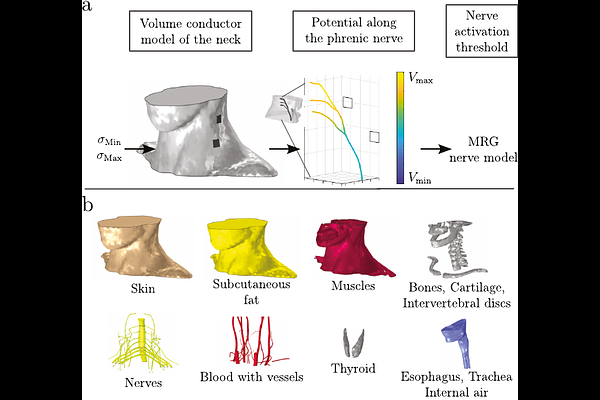Influence of neck tissue conductivities on the phrenic nerve activation threshold during non-invasive electrical stimulation

Influence of neck tissue conductivities on the phrenic nerve activation threshold during non-invasive electrical stimulation
Wegert, L.; Di Rienzo, L.; Codecasa, L.; Ziolkowski, M.; Hunold, A.; Kalla, T.; Lange, I.; Haueisen, J.
AbstractPhrenic nerve stimulation can be used as an artificial ventilation method to reduce the adverse effects of mechanical ventilation. Detailed computational models and electromagnetic simulations are used to determine appropriate stimulation parameters. Therefore, tissue parameters have to be selected, but they vary widely in the literature. Here, we evaluated the phrenic nerve activation threshold using minimum and maximum electrical conductivity values found in the literature of each modeled neck tissue type. To calculate the phrenic nerve activation threshold, an anatomical detailed finite element model of the neck and a biophysiological nerve model were used. Considerable changes in nerve activation thresholds were found for the following tissue conductivities (with decreasing effects): muscle, skin, soft tissue, subcutaneous fat, and nerve tissue. Changes in the nerve activation threshold due to changes in skin conductivity occurred due to the bridging effect, which is an unwanted and avoidable effect during stimulation. In conclusion, fat, muscle, nerve, and soft tissue require the most accurate tissue properties and geometric representation within the model.